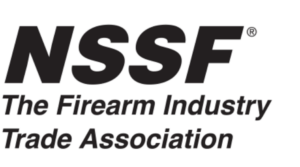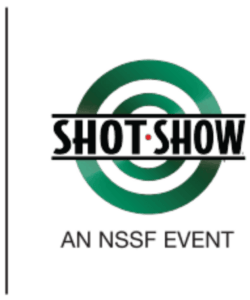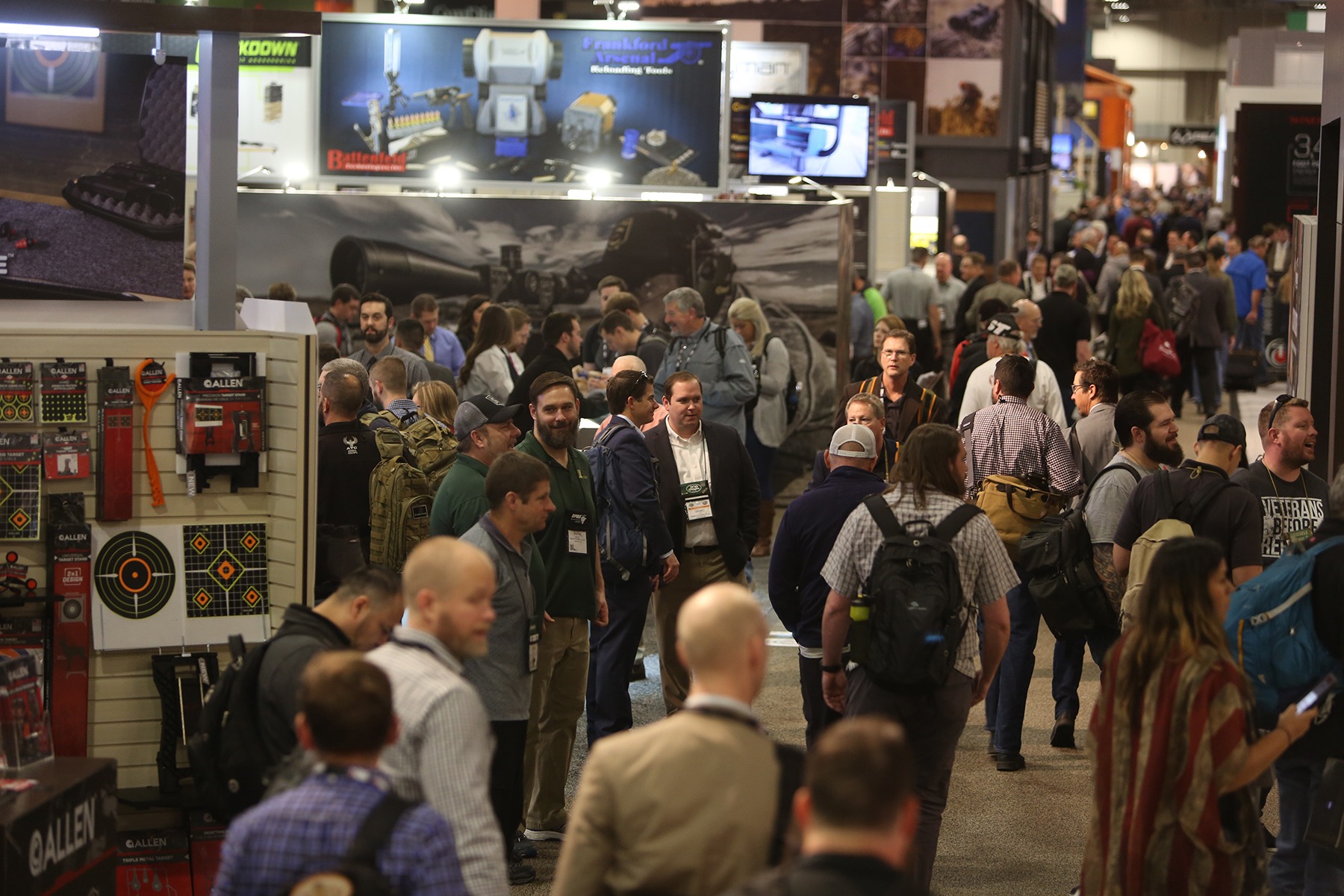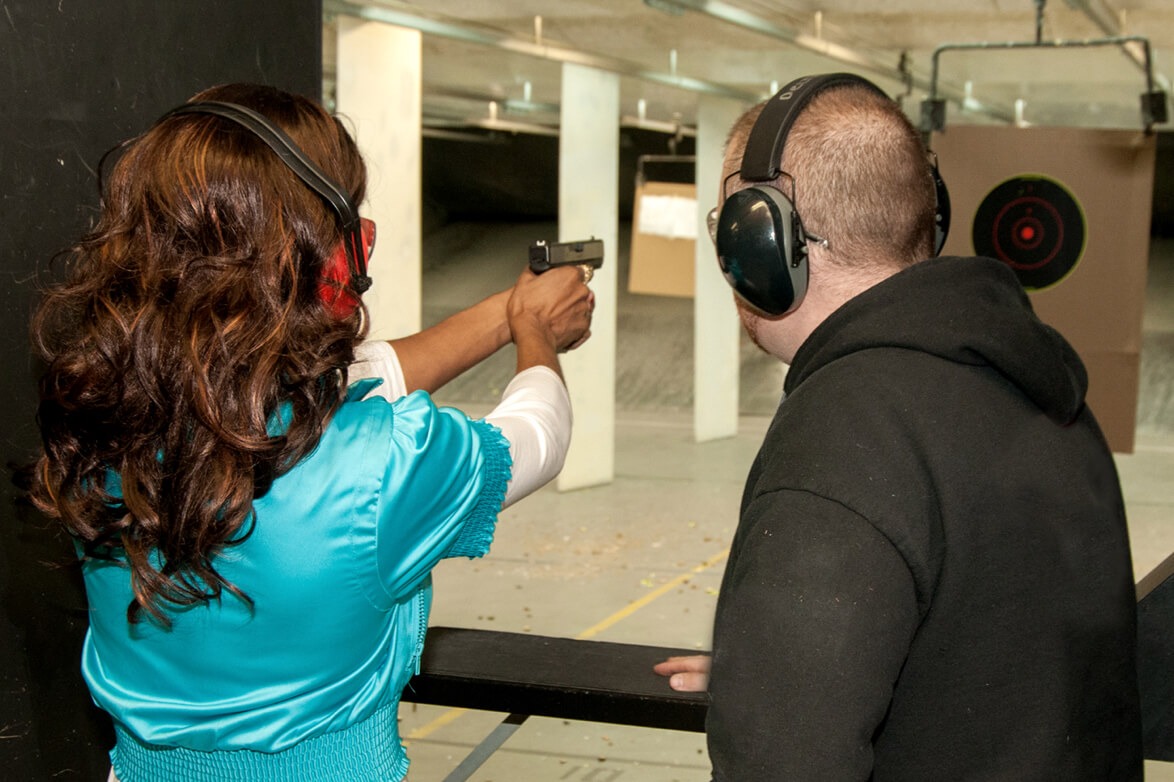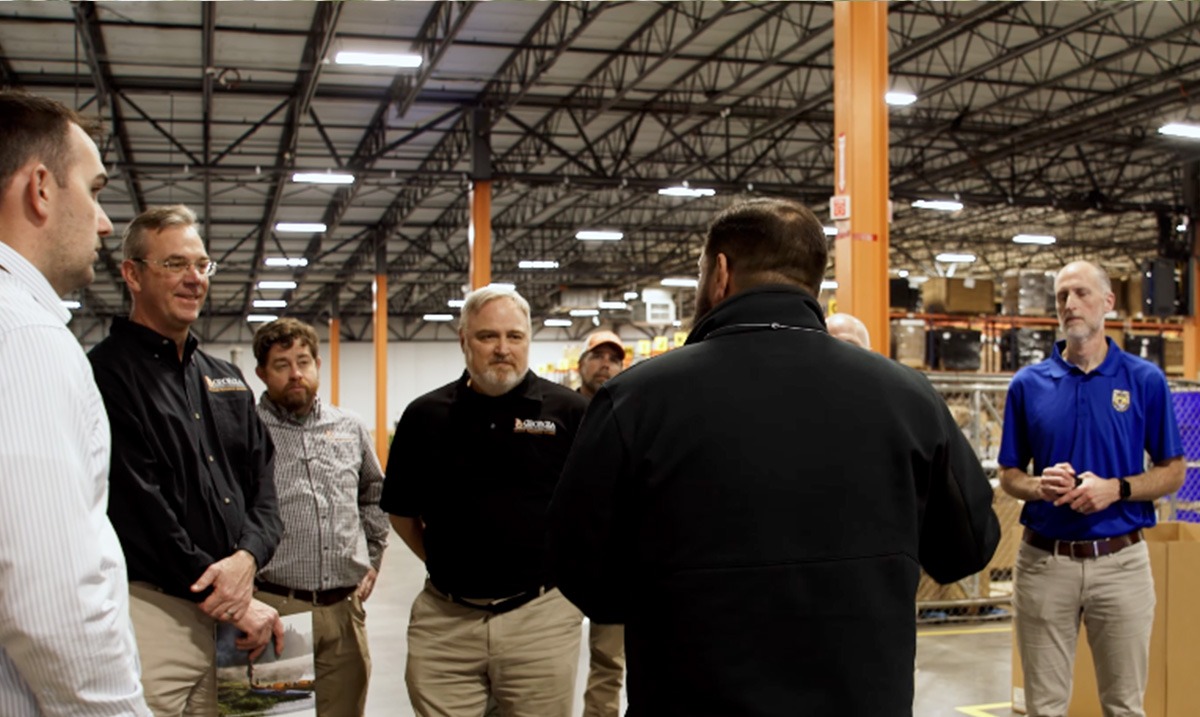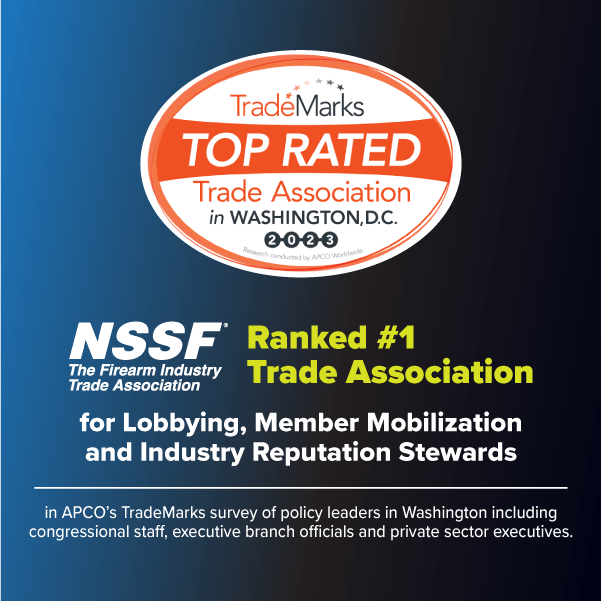 Back to News
Back to News
October 1, 2025
First Shots Program Helps the WildGats at the University of Arizona Give Back to the Community
Applying for a simple grant nearly a decade ago has led to hundreds of community members learning firearm safety each year.
Bill Perkins, coach of the WildGats at the University of Arizona and the Southwest Regional Representative for Scholastic Shooting Sports Foundation, tells us how it all happened.
How a Collegiate Grant Sparked the WildGats Shooting Team
Perkins and his athletes host two highly attended First Shots® events in Tucson, Arizona, each year. This initiative began when he applied for an NSSF Collegiate Shooting Sports Initiative Grant around ten years ago. “We were awarded the grant and started the WildGats Shooting Team as a direct result of that,” he explains. He says they spent their first two years competing locally, then around the third year they started competing nationally. “We now have nine national trophies,” he says proudly.
Then, around seven years ago, he was asked if he was interested in hosting a First Shots program and thought it sounded interesting. “We just kind of slowly worked into this process and then we hosted our first event later that year, and now we run two per year,” explains Perkins.
Partnership with Pima County Shooting Range Builds Community
“One of the aspects that I always promote is that our community is stronger when we all support each other,” says Perkins, “Our home range is the Pima County Southeast Regional Park Shooting Range in Tucson, Arizona, and we have a really good partnership. We couldn’t do this without them.”
Perkins says that he, the other coaches and the athletes on the team all work the event, and the range provides the venue, more staff and handles all the promotion. The range sends it out through their media contacts, via their email chain and in their newsletter. “Every major news organization in southern Arizona has covered us at some point in time and so we get a tremendous response,” adds Perkins.
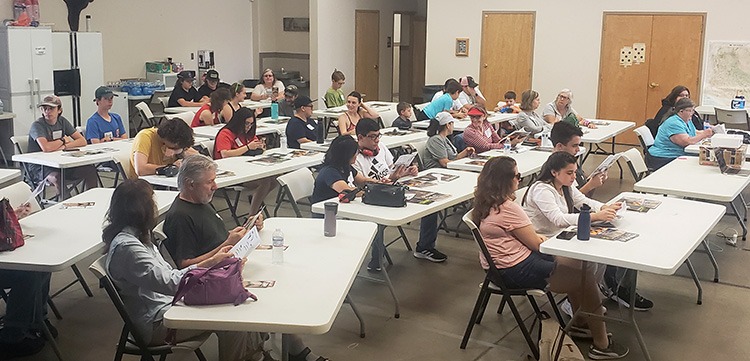
Perkins appreciates the partnership with NSSF. “They send safety glasses and ammo and material about how to safely store firearms, as well as other resources that are available to new shooters. We put flyers on every chair so that when people come in and they sit down they have these materials in front of them, information that maybe they wouldn’t know if it wasn’t for this program.”
Promoting Firearm Safety Through Hands-On Instruction
Students register through the team’s website. Perkins explains the purpose of registering online ahead of time. “That’s part of our safety culture because as soon as that one time slot fills, we close it and then they can sign up for another slot. That way we manage the flow of people to make sure that we have the right proportion of staff.”
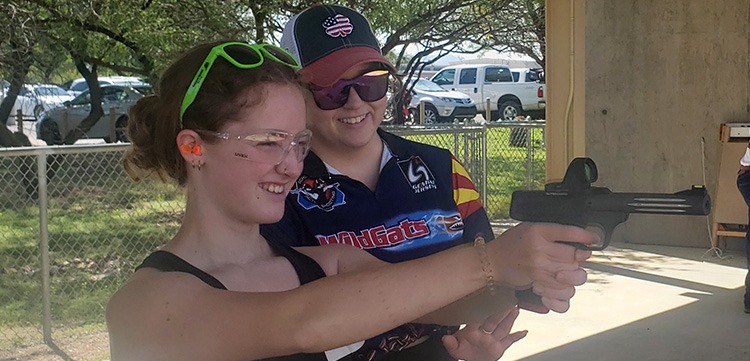
Typically, between 80 and 120 people attend these events. Most are community members, while some are college students interested in learning about shooting, which often results in new team members for the WildGats.
What Participants Experience at a First Shots Event
The program starts with the NSSF PowerPoint, followed by ‘stations,’ which Perkins explains. “One station teaches about the proper way to put in earplugs. Another one puts glasses on their head and makes sure that they fit properly. It sounds so minor, but if the glasses don’t fit properly, they’re going to be a constant distraction on the range. And any distraction means they’re not focused on what’s really important. Then at the end of the day we give them a reminder to wash their hands because that’s part of safety, too.”
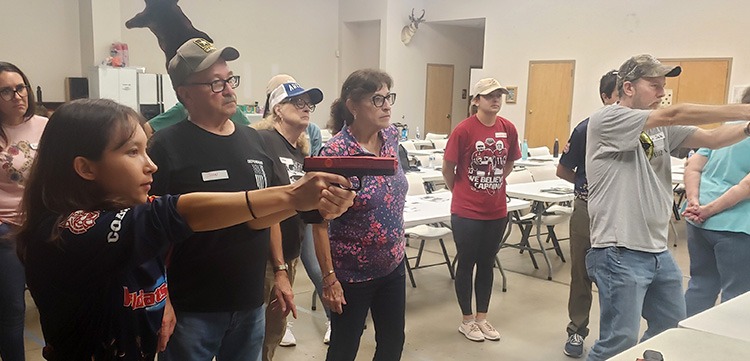
Participants are taught about grip, stance and sight alignment using props, and then they have the opportunity to shoot ‘MILO,’ a laser simulator. Once they’ve demonstrated that they can maintain safety and follow directions, they go out to the firing line.
Perkins explains the process for shooting. “We typically have ten to 12 firing points set up. We always have a couple of .22 rifles on a sandbag on a bench so that if someone has never fired a firearm before, or they’re a little hesitant, we can place them there and let them dry fire a few times. This helps them get comfortable with how the gun works.”
Why Strong Volunteer Support Ensures Safety and Success
Perkins says that between his team and the range personnel, they have about 15 people working the event. “We have a really high ratio of people working the event compared to the number of participants. When they’re on the firing line it’s all one-to-one, and that way we can make sure that we maintain safety and give all the participants a really good experience.”
The range staff also has an opportunity to speak to the attendees. Alan Baker and Kelly Ryan, with the Southeast Regional Park Shooting Range, report that some attendees like what they see at the range and return for more training. One thing that helps is the provided incentive. “We give them a free shooting day afterwards and encourage them to continue on to take more educational classes after that,” says Baker.
Baker and Ryan also share their thoughts on the partnership. “We’re the shooting team’s home range so they come out here and practice. We have a good relationship. In turn, they help us with the safety during the event and it also gives the students a chance to do some of the teaching.”
Community Feedback: From First-Time Shooters to Lifelong Participants
Perkins shares some of the feedback he has received from the program. “A few years ago, we had a woman come out and she was learning to shoot a handgun. She looked right at me and says, ‘I’m not terrible at this!’ I laughed, but I asked her what would have made her think she would be terrible. She said that she went into a gun store and the clerk didn’t think she’d be very good with the handgun, so he sold her a shotgun. She showed me a picture of the shotgun and it was a terrible choice. She was just so happy because she found out that this person who didn’t even know her anticipated she would be terrible at shooting and it turned out she was great at it.”
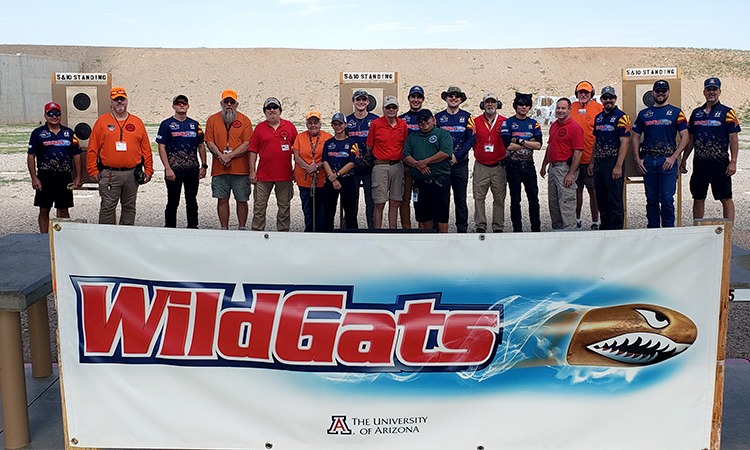
He shares how some families utilize the First Shots program. “We get a lot of people who just tell us they want their kids to know how to shoot safely but they’re not comfortable doing it on their own. One father brings his kids to every event we have.”
And finally, he says they had one older woman who said shooting was on her bucket list as she was about to turn 80 years old. She was excited to be able to do it in an environment where she felt comfortable.
Advice for Teams Looking to Start First Shots
Perkins highly recommends that other youth and collegiate programs start a First Shots program. His advice is to know that “It’s just a crawl-walk-run concept. The very first time we did First Shots, we had maybe 20 people, and the second time it was about 50, and then we were up to 75. Now our sign up allows 150 people to sign up and we know we may get as many as 120 to show up.”
One lesson learned is the importance of timing when opening registration. Typically, as soon as the range advertises the event in their newsletter, it’s completely full in 48 hours. “It just proves there is a lot of demand for this,” says Perkins. In the past, they would advertise it a month in advance, but then many people wouldn’t show up. “Now we advertise it six days before the event so that it’s really fresh in everybody’s mind and our show-up rate is about 85%.”
For new programs, however, especially in smaller markets or in the very first year of hosting, a longer promotional window may be beneficial to build awareness. Organizers may wish to experiment with timelines that give people more lead time, while also reinforcing registration with reminder emails closer to the event date. As the program becomes established and word-of-mouth builds demand, Perkins’ shorter timeline strategy can become more effective.
“I think it’s really important for me as a coach to pass along a lot of life lessons. I really want to impress upon our youth that these things don’t just happen by themselves. Southeast Regional Park Shooting Range has been a fantastic partner for us,” says Perkins. “Also, I believe that my athletes become even better athletes by working with somebody to teach them how to shoot. They have to be able to explain something clearly and concisely, so they have to have a deep understanding of it. And they’re better people because they get to do some community service and give back.”
Shared Goals: Firearm Responsibility, Safety and Community Service
The goals of the WildGats team, the range and the First Shots program align perfectly. As Perkins says, “Our mission is to promote the responsible use of firearms and the whole point of First Shots is to increase the safety of the community.”
About the Author
Nancy Keaton is a freelance writer and facilitator for the Waco Chapter of A Girl and A Gun Women’s Shooting League. She formerly shot in IDPA, ASI and 3-Gun matches, was the president of Centralia Rifle Club in Centralia, Washington and is a retired college administrator.
Become a First Shots Host Team!
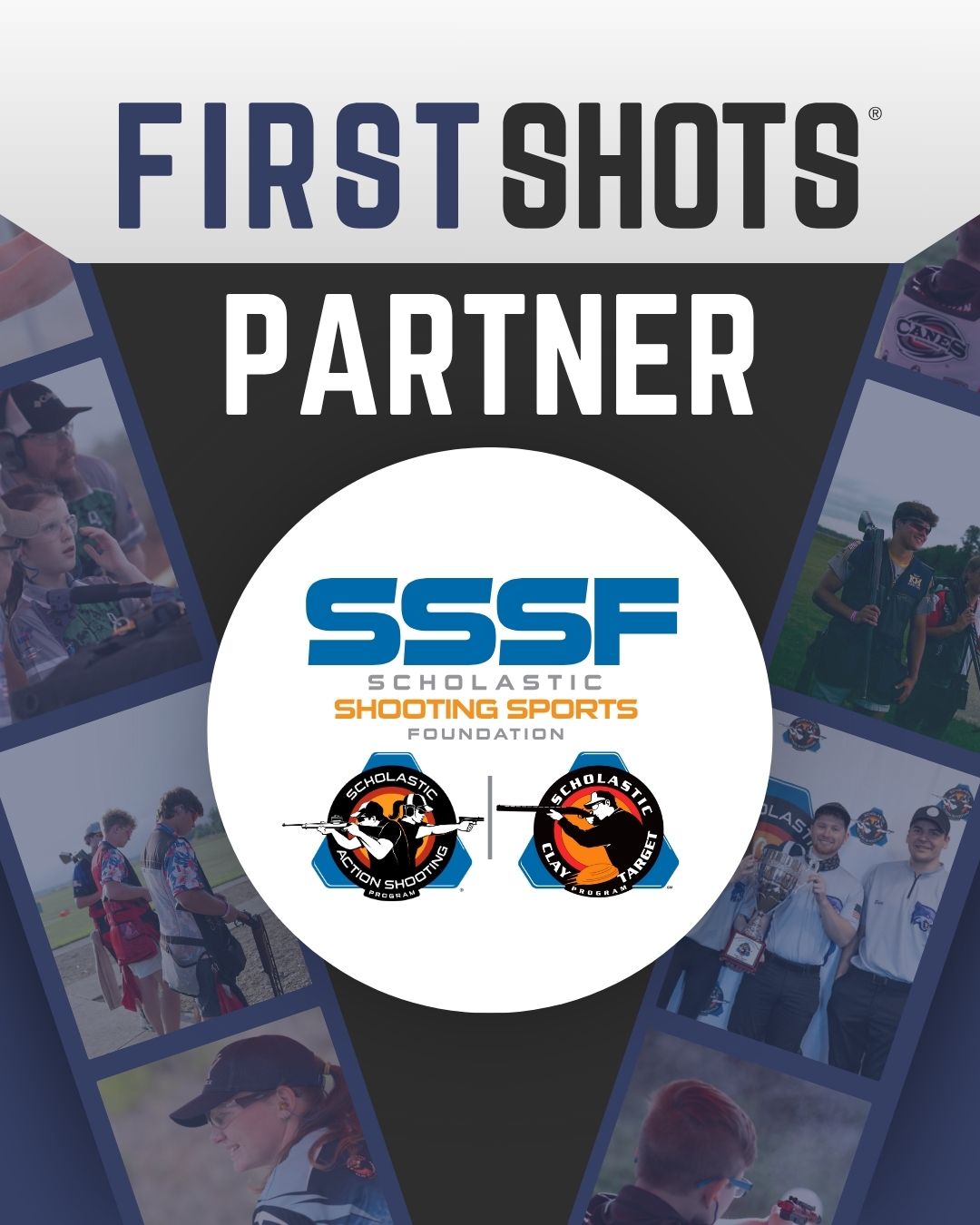 Is your team ready to make an even bigger difference in your community by introducing more people to the shooting sports? The NSSF invites SASP and SCTP teams to become hosts of First Shots events at your home ranges.
Is your team ready to make an even bigger difference in your community by introducing more people to the shooting sports? The NSSF invites SASP and SCTP teams to become hosts of First Shots events at your home ranges.
By becoming a host, you will not only play a crucial role in promoting safe and responsible shooting practices, but you will also receive a wealth of support materials to ensure your event is a success. Here’s what you can expect:
- Eye and ear protection for all participants
- Rimfire ammunition or financial assistance to help cover costs
- Advertising support to help you reach a wider audience and attract more participants
- Targets
- Handbooks
This is your chance to inspire the next generation of shooters and foster a love for the sport. Don’t miss out on this incredible opportunity! To learn more or to sign up, contact Ann Gamauf, NSSF Member Services Coordinator, at [email protected] or call 203-299-2079. Join us in making a positive impact and help shape the future of shooting sports!
Categories: BP Item, Featured, First Shots Ranges, Industry News, Ranges, Retailers, Top Stories
